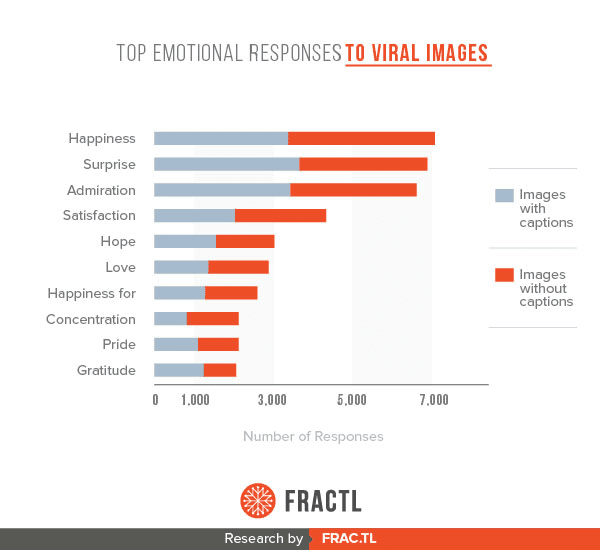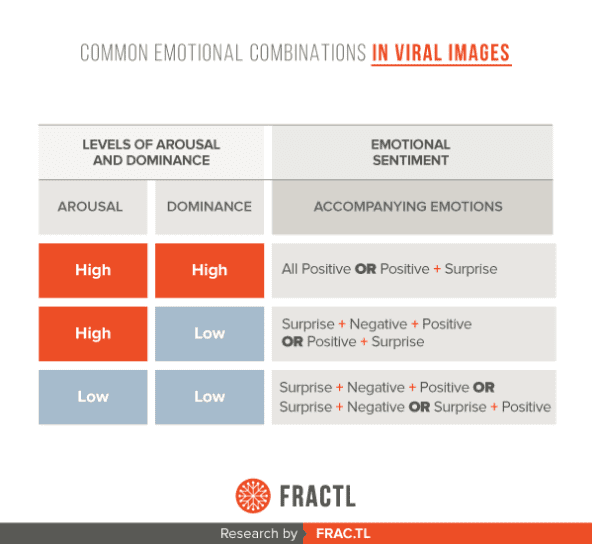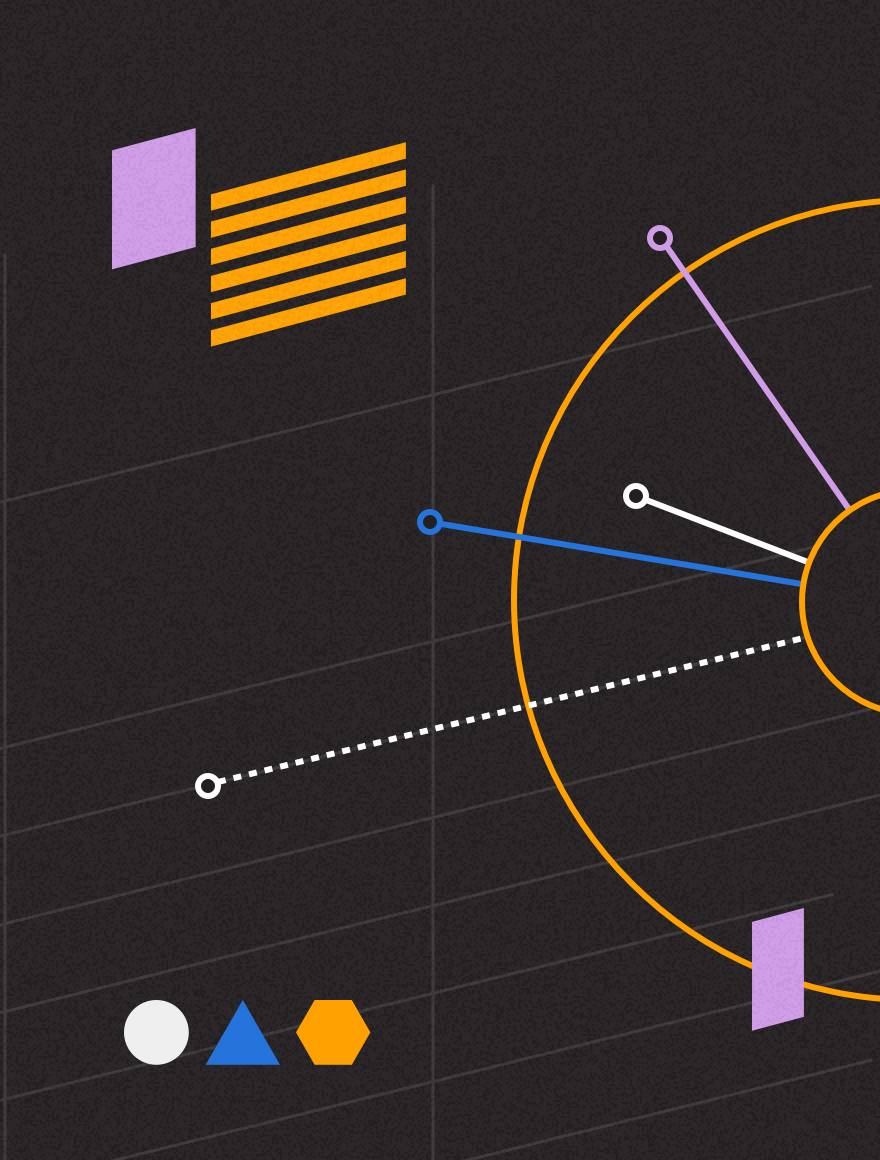Content marketing is no longer something entirely foreign to marketing teams. In fact, a quarter of marketers now devote more than 50 percent of their budget to content. It goes without saying then that there’s a ton of content out there, which means the most competitive brands are trying to figure out how they can break through the noise—ideally by going viral.
The thought of having millions of people see your content is every marketer’s dream, and the benefits that this type of exposure can bring to your brand are endless. So what’s the secret?
A viral hit isn’t a matter of luck
More and more research indicates that your content needs to strike the right emotional chord if you want it to be pushed across the web. My team at Fractl recently used the Pleasure-Arousal-Dominance (PAD) model to analyze the emotional responses to 100 of the top images from Reddit’s r/pics community to determine if there are any themes in the emotional combinations for viral images.
One of the biggest takeaways was that the most common emotions associated with viral images were overwhelmingly positive. More specifically, the top 10 emotions are listed below:

Negative emotions like hate, reproach, and resentment were reported far less than positive emotions. However, our data indicates that they can still generate a viral hit—you just have to strike the right combinations of arousal and dominance.
New research from Jacopo Staiano of Sorbonne University and Marco Guerini of Trento Rise sheds light on the roles that valence, arousal, and dominance play in how content goes viral. Their findings indicate that individual emotions may not be the root of virality. Instead, they argue, there’s a pattern between viral content and specific combinations of valence, arousal, and dominance since each individual emotion is a combination of these three dimensions.
So how do each of these dimensions connect with emotional responses? Here’s a quick breakdown:
- Valence is the positivity or negativity of an emotion. Happiness has a positive valence; fear has a negative valence.
- Arousal ranges from excitement to relaxation. Anger is a high-arousal emotion; sadness is low-arousal.
- Dominance ranges from submission to feeling in control. Fear is low-dominance; an emotion someone has more choice over, such as admiration, is high-dominance.
When we looked at how these levels varied with the viral images in our data set, we were able to pinpoint the ideal levels of arousal and dominance that ignited a viral hit as well as the subsequent emotional responses. The most frequent combinations are shown below:

Our analysis echoes previous research in that viral content tends to be surprising, emotionally complex, or incredibly positive. However, this new data adds an additional layer as to why these emotions are so effective at driving shares: they are the result of more nuanced combinations of arousal and dominance.
Let’s take a look at what one of these emotional combinations looks like in action. When both arousal and dominance are high, the accompanying emotions were either all positive or a combination of positive emotions plus surprise.
A great example that you might have seen is this photo of paramedics (or police officers depending on you ask) staying behind to do the dishes after a woman was taken to the hospital, which earned more than 2.6 million views on Imgur alone.

The image evoked a purely positive emotional response, emphasized in the comment thread through signs of admiration like, “Real heros right there.”
The biggest takeaway for marketers? A viral hit isn’t a matter of luck.
Research continues to prove that going viral doesn’t happen by chance; it’s actually the result of a powerful emotional experience. When outlining your next campaign, keep some of these insights in mind:
- An element of surprise can generate massive shares for any piece of content. This emotion was felt regardless of the levels of arousal or dominance.
- Negative content tends to make people feel a lack of control (low levels of dominance), so in order to be effective it also needs to elicit additional feelings (i.e. be emotionally complex).
- Lighthearted content doesn’t need to be emotionally complex to perform well – when arousal and dominance are high, emotional responses will likely be positive.
